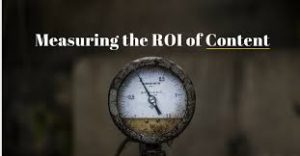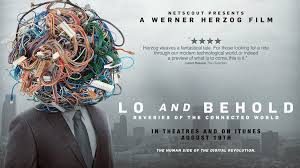 We Need Better Metrics
We Need Better Metrics
Over the past few months, I’ve become hyper-aware of the need for new metrics of success in the film world. Mainly for documentary film and branded content, because I work a lot in those two spaces, but also because those who work there so clearly need a better way to speak about their success and/or their return on investment (ROI) than just audience numbers, views or sales.
As I reported a few weeks ago, when BrandStorytelling interviewed a bunch of C-Suite brand folks, one of their major concerns was the need for a better way to measure ROI. And when I wrote up the Sundance case study of Unrest, I noted the same thing – that while it wasn’t the purview of the report, it would have made a better case for its impact if it had focused more on metrics beyond audience and dollars (not) made.
Not to pick on Unrest, because no documentary that I know of does a good job of reporting impact, and that wasn’t the goal of this study, but as the report states, the filmmaker’s goals were not to make a lot of money, but to have a fair bit of impact – to raise awareness about ME and chronic fatigue, among many other things. But as I mentioned in my last post, they tout their 300 press write-ups, but don’t say anything about how many people those might have reached. Well, those are earned media. Normally, someone would have to pay someone to get that press written about them, and it has a value. And while you can’t get the NYT to tell you how many people read the review of your film, you can look up its average readership in print and online. If you want to get fancy, you can even make estimates of how many people read it. You can also look at how many people shared the article, or commented on it.
In fact, if you think about it for a minute, there’s a lot of stuff you can measure to show that your impact went way beyond how many people saw the film, or that 300 outlets reviewed it. Their impact producer reached out to lots of nonprofits and grassroots groups to help spread the word on social media and through email newsletters. Well, you can ask how many subscribers they have, how many followers they have, and how many opens/clicks and retweets they got. You can ask festivals to report back how many people came to your screenings. You can keep track of your own social media postings and how they spread – your audience is not just your Facebook follower count, it’s also your number of posts and how many times they were interacted with, and how many people saw your ads. And as Kenyatta Cheese says, your audience has an audience – and you can track a lot of that as well.
There’s a lot more you can do, too. When we work with clients, we will often track sentiment on Google analytics, and we can show how search terms change over time. So you may show how searches for ME and chronic fatigue spiked during the Unrest campaign, for example. Heck, I’d argue that they should have even publicized their piracy numbers, which are alluded to in the report, and broken down how many people pirated it, and where, to show how they had such an impact that people bothered to pirate the film.
There are tools for this, and companies you can hire to run all kinds of fancy metrics for you, but you can do a lot of it for free yourself. But one of the big problems is coming up with some consistency across the field. There’s a lot of work to be done here to codify best practices, build metric-taking tools that are accurate and dependable and replicable, and that go much further than the simplistic examples I am using here.
In fact, awhile back, there were several groups pushing for more tools for measuring impact, and there was a lot of fear and backlash in the field. A few tools were made, and Britdoc (now DocSociety) even put together a decent Toolkit focused on this back in 2014, which links to many of these resources. Unfortunately, a lot of this work seems to have stalled, or was too complex for many people to understand, so it didn’t get adopted widely. And it’s clear we need more work here as these tools aren’t being used very regularly and/or aren’t being disseminated widely enough.
Or perhaps the field just didn’t really care about impact and moved on. That’s my cynical thought, because if they did care, there would be a lot more action here. It’s easy to look back at the old case studies and arguments and see a field that really didn’t want to be bothered with measuring their actual impact, and just wanted to make a film.
I get that – filmmakers want to make films, and I know that we make films for many artistic reasons as well. But in many ways, the film is also just an excuse for all of the things you can do around the film that earn you press and attention, and that also have impact. When you are making a film for entertainment, or for profit or prestige (or just for art), then all the stuff you do around the film is just marketing to get butts in seats and get people to see the film. But for documentary, all of this stuff gets people to hear about the same issues, and can have just as much impact as the film itself. And a lot of these things are measurable, and if measured more often and accurately, these things can help us all make the case for the value of making these films.
That’s why I think we need to refocus on impact and we need more of these tools – and/or better ones – if we’re going to justify the budgets needed to keep making quality film/video when the distribution landscape can be as tough as that case study showed it to be for so many films. Because the impact of many of these films goes well beyond the numbers we’re currently sharing.
 Perhaps the best thing to do would be to keep it simple and just follow the earned media example of brands. When Netscout sponsored Lo and Behold, by Werner Herzog, they didn’t tout how many people saw the film, or how much it made at the box office. Instead, they spoke about it in trade press and at SXSW as having increased their earned media exposure ten times over to 30 Billion organic media impressions, and how they would have had to run an ad campaign that cost $20-Million to do that, but instead made a movie for less than $2 Million and ran no ads. I’m sure they have lots of other data that isn’t public, but that’s the kind of data/metrics we need to move towards when we speak about the impact of our documentary work, and it’s where brands need to focus their sites when talking about their ROI to their colleagues.
Perhaps the best thing to do would be to keep it simple and just follow the earned media example of brands. When Netscout sponsored Lo and Behold, by Werner Herzog, they didn’t tout how many people saw the film, or how much it made at the box office. Instead, they spoke about it in trade press and at SXSW as having increased their earned media exposure ten times over to 30 Billion organic media impressions, and how they would have had to run an ad campaign that cost $20-Million to do that, but instead made a movie for less than $2 Million and ran no ads. I’m sure they have lots of other data that isn’t public, but that’s the kind of data/metrics we need to move towards when we speak about the impact of our documentary work, and it’s where brands need to focus their sites when talking about their ROI to their colleagues.
If brands and foundations and filmmakers can all use better numbers, it seems to me there’s a collaboration to be had here.
WHAT I’M READING: FILM
Ava Duvernay on the cover of Adweek, as the star of their Creative 100 issue. Asked about working across formats – something I think every director should consider doing, she says: “As little as even 10 years ago, you were either a film director or a television director, you were either a commercial director or a documentary director or a narrative director. It’s all storytelling. At the end of the day, we’re trying to tell the story and make it as compelling, vibrant and heart-expanding as possible.” Amen.
Movie Critics are mostly white and men, according to a report from USC Annenberg that was widely reported, but is linked here in Variety. My two cents: Widely reported, but it can’t be talked about enough, me thinks. It’s a problem when fest programmers, critics (and reporters) and nearly every other facet of the industry is dominated by white folks, and mainly men. Silver lining: the best ones (Dargis, Wilmore, etc.) who get the most traction seem to still be women.
IFC Center’s Expansion Plans: IFC Center has been planning an expansion for awhile, and Curbed reports today that the revised plans include not just more theater space, but also some apartments – which would be a great place to live for any movie lover, and 6 new screens. Sounds great to me.![]()
What’s Up with Windows these Days? Anthony Kaufman takes a look for Filmmaker Magazine at the current state of windowing a film’s release between theatrical and digital. He reports on some good examples/case-studies of the pros and cons of various windowing strategies, and what seems to be working best for various types of films. I’m interviewed in the article, and we discussed my pet-theory that Netflix is not just cherry-picking the best content, but by using more exclusive contracts for those films, is forcing consumer behavior into SVOD over transactional. This is similar to what we’ve seen in music – and I’m not saying it’s a bad thing for them to do this as a business model – but it does mean that as more audiences look for their film choices on SVOD, your indie film will have less opportunity to break through and be discovered for sale/rent. Interesting times.
WHAT I’M READING: BRANDED CONTENT

NYMagazine
Vice Media is a head-fake. My two cents: Thank god that Reeves Wiedeman at New York Magazine finally wrote this excellent take-down of Vice – A Company Built on Bluff – so I didn’t have to, because I’m not a real journalist. I’ve been telling everyone forever that Shane Smith’s greatest ability has been selling his shit to Rupert Murdoch, Martin Sorrell, Tom Freston and other old media men who wanted to be hip again, and that there was no there, there at Vice. Well, now NYMag, which does finally have a there, there again, has the story. It’s a must read, as it shows just how f-d the entire media business is if they could fall for this story. As someone said in my LinkedIn feed (I can’t believe I just said that phrase…), Vice is the Theranos of the media business. This story could have gone in any one of my subject columns, but I put it under branded content, because without them selling their bullshit to Intel, for the Creator’s series, they wouldn’t probably have made it this far.
WHAT I’M READING: INTERNET
 Net Neutrality is Dead. And the Verge has the write-up on what that means, and what’s going on as we move forward. My two cents: It’s been dying for quite awhile – I went back and looked, and I first wrote about the possible death of net neutrality in April and May of 2006 (!), and the issues were much the same then – the FCC, Congress not acting, big corporations taking more control. But while net neutrality has been in danger of dying its slow death for awhile, it’s more serious now, and Ajit Pai somehow wins biggest d-bag of the Trump administration, and that’s quite an accomplishment, for pushing this through. Like the death of our climate via Pruitt and public lands via Zinke (and schools via DeVos, etc. etc.) this will be a slow process, but the short answer is only Congress can do much now, and we can’t hope for much there. I might feel better about this if the activist groups fighting on our behalf weren’t just hitting us up for funds every day like an NPR fundraising drive gone mad, or if anyone seemed to be getting themselves in an uproar about it, but I think we’re f-d.
Net Neutrality is Dead. And the Verge has the write-up on what that means, and what’s going on as we move forward. My two cents: It’s been dying for quite awhile – I went back and looked, and I first wrote about the possible death of net neutrality in April and May of 2006 (!), and the issues were much the same then – the FCC, Congress not acting, big corporations taking more control. But while net neutrality has been in danger of dying its slow death for awhile, it’s more serious now, and Ajit Pai somehow wins biggest d-bag of the Trump administration, and that’s quite an accomplishment, for pushing this through. Like the death of our climate via Pruitt and public lands via Zinke (and schools via DeVos, etc. etc.) this will be a slow process, but the short answer is only Congress can do much now, and we can’t hope for much there. I might feel better about this if the activist groups fighting on our behalf weren’t just hitting us up for funds every day like an NPR fundraising drive gone mad, or if anyone seemed to be getting themselves in an uproar about it, but I think we’re f-d.
WHAT I’M READING: START-UPS & ENTREPRENEURS
Foresight launches new cap table models: Launching a new start-up or any new business? Foresight is a brilliant little company that has built templates to help you start your business – build financial projections, business models, cap tables, exit waterfall tools, and a bunch of free tools, including a paid media marketing tool that helps you determine where your ad spend is working and where it should be going (this can work for film marketing as well). Taylor Davidson, who owns Foresight, is also an artist/photographer, and he launched a new cap table tool this week. I’ve used his tools and recommend them to any entrepreneur, and marketer.
Social tagging: branded content > cap tables > documentary > FCC > IFC > metrics > movie critics > net neutrality > ROI > Vice > windowing